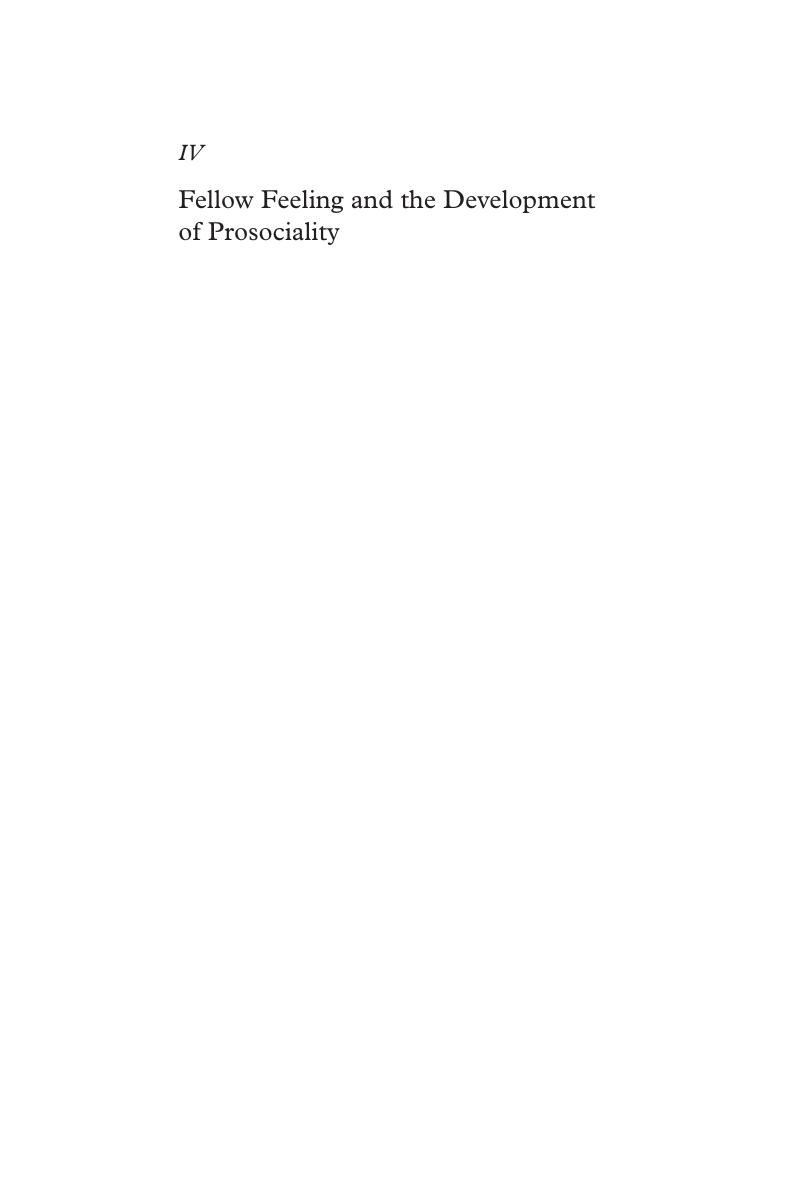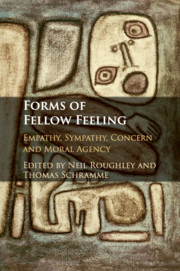IV - Fellow Feeling and the Development of Prosociality
Published online by Cambridge University Press: 28 December 2017
Summary

- Type
- Chapter
- Information
- Forms of Fellow FeelingEmpathy, Sympathy, Concern and Moral Agency, pp. 163 - 242Publisher: Cambridge University PressPrint publication year: 2018



